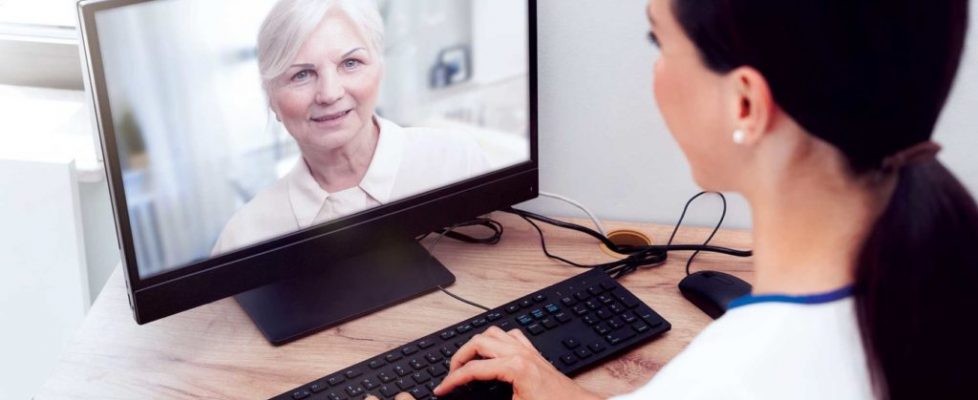FCC doles out $13.6M for COVID-19 telehealth relief; Here are the 30 organizations that received funding
The Federal Communications Commission has approved four waves of COVID-19 telehealth program applications, funneling more than $13.6 million in funding to healthcare providers across the U.S.
Under the $200 million program, part of the $2 trillion Coronavirus Aid, Relief and Economic Security Act, hospitals and health centers can apply for up to $1 million to cover costs for internet-connected monitoring devices, broadband connectivity and telecommunication devices.
Below is a list of the applications FCC has approved since April 16; the agency is continuing to accept applications and will distribute more funding on a rolling basis.
April 29: fourth wave
1. Augusta (Ga.) University Medical Center received $113,744 to expand its ultraportable ultrasound program to screen COVID-19 patients for different types of respiratory diseases prior to hospital admittance.
2. Children’s Hospital Colorado (Aurora) received $807,090 for telehealth services for children, adolescents and young adults with complex pediatric illnesses.
3. Country Doctor Community Health Centers (Seattle) received $392,770 to build its telehealth capacity and online screening functionality to triage COVID-19 patients remotely and treat patients with chronic conditions.
4. Greene County General Hospital (Linton, Ind.) received $60,480 to expand its mobile telehealth services for senior patients displaced by the COVID-19 emergency.
5. Institute for Family Health (New Paltz, N.Y.) received $729,118 to provide telehealth visits for primary care, preventive care and mental healthcare for patients at 16 of its community health centers.
6. Lancaster (Pa.) Health Center received $75,710 to expand telehealth capacity to screen and treat COVID-19 patients.
7. Loudoun Community Health Center T/A HealthWorks for Northern Virginia (Leesburg) received $93,380 to expand video telehealth services for COVID-19 patients.
8. Mayo Clinic (Rochester, Minn.) received $1 million to implement video telehealth services and remote patient monitoring across more than 50 communities in Iowa, Minnesota and Wisconsin.
9. McClaren Health Care (Grand Blanc, Mich.) received $623,328 for telehealth connectivity and services at 12 healthcare provider sites across the state.
10. New York Psychotherapy and Counseling Center (Jamaica, N.Y.) received $126,799 for telehealth services for low-income and at-risk patients struggling with mental health issues.
11. Parker Jewish Institute for Health Care and Rehabilitation (New Hyde Park, N.Y.) received $97,965 for telehealth services and connecting devices for elderly and chronically ill patients.
12. Service Program for Older People (New York City) received $26,180 for mental health telehealth services for adults ages 55 and older.
13. Valley-Wide Health Systems (Alamosa, Colo.) received $46,437 for video telehealth services for COVID-19 screening and primary medical care.
April 23: third wave
1. NYU Grossman School of Medicine (New York City) received $772,687 for telehealth services for high-risk, elderly and vulnerable patients.
2. ChristianaCare Health Services (Newark, Del.) received $714,322 to expand telehealth and remote monitoring services to low-income patients.
3. Anne Arundel Medical Center (Annapolis, Md.) received $664,606 for telehealth services for COVID-19 patients at 11 medically underserved areas throughout the state.
4. White Plains (N.Y.) Hospital Medical Center received $165,832 for telehealth services to treat high-risk and vulnerable patients with pre-existing pulmonary conditions.
5. Garfield Health Center (Monterey Park, Calif.) received $130,217 to provide remote care to low-income, vulnerable patients with underlying and/or chronic health conditions who are high risk for COVID-19.
6. HIV/AIDS Alliance for Region 2 d/b/a Open Health Care Clinic (Baton Rouge, La.) received $116,049 to expand telehealth and remote monitoring services for low-income patients.
April 21: second wave
1. NYU Langone Health (New York City) received $983,772 to implement telehealth capabilities in operating rooms and conference rooms that have been converted into intensive care units for clinicians to safely monitor ICU patients from separate floors.
2. University of Michigan Hospital (Ann Arbor) received $649,000 to install remote patient monitoring technology for high-risk COVID-19 patients and expand video visit capacity for patients with and without COVID-19.
3. Banyan Community Health Center (Coral Gables, Fla.) received $958,270 to serve 24 medically underserved areas in Miami-Dade and Broward counties by providing telehealth services to an estimated 2,000 low-income and high-risk patients.
4. St. John’s Well Child and Family Center (Los Angeles) received $382,331 to implement remote patient monitoring, video consults and voice consults to treat 21,000 patients in south Los Angeles and Compton, Calif.
5. Health Partners of Western Ohio (Lima) received $737,098 to deploy telehealth carts and services for low-income patients at 71 community locations.
April 16: first wave
1. Mount Sinai Health System (New York City) received $312,500 for telehealth devices and services for geriatric and palliative patients at high risk for COVID-19.
2. UPMC Children’s Hospital of Pittsburgh received $192,000 for telehealth services for children who received organ transplants and are immune-compromised and at high risk for COVID-19.
3. Ochsner Clinic Foundation (New Orleans) received $1 million for telehealth services and devices for high-risk patients and populations in Louisiana and Mississippi to treat and slow the spread of COVID-19.
4. Grady Memorial Hospital (Atlanta) received $727,747 to launch telehealth video visits, virtual check-ins, remote patient-monitoring and e-visits.
5. Hudson River HealthCare (Peekskill, N.Y.) received $753,367 for telehealth services to expand front-line COVID-19 testing and treatment programs for low-income and uninsured patients.
6. Neighborhood Health Care (Cleveland) received $244,282 for telehealth, connected devices and remote patient-monitoring for low-income patients with chronic conditions who are impacted by COVID-19.

